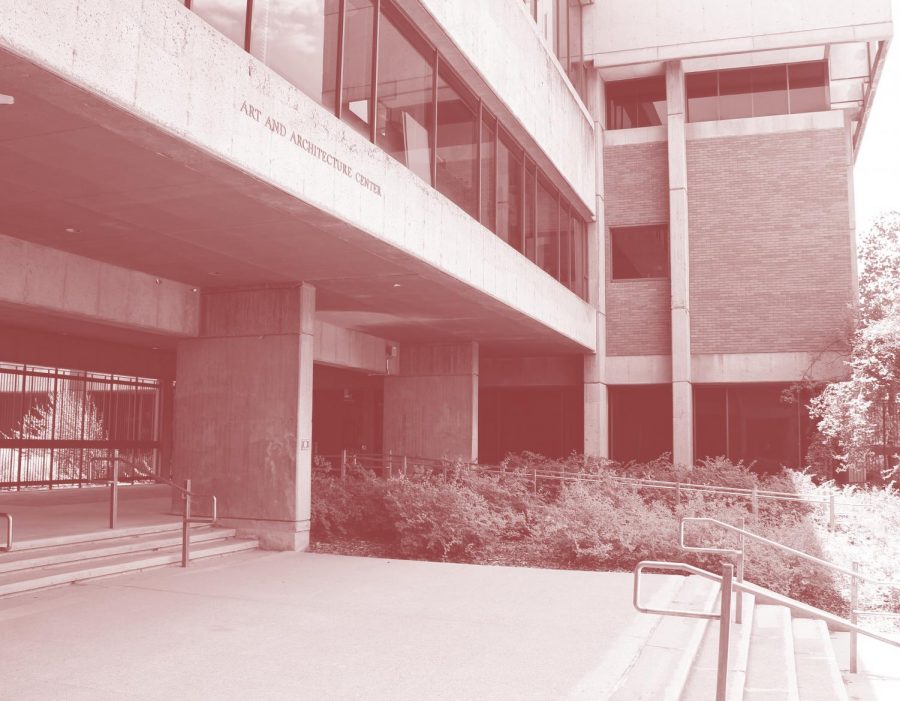University Resources for Arts Students this Fall
(Photo by Brooklyn Critchley | The Daily Utah Chronicle)
September 10, 2021
As students and faculty prepare to return to the University of Utah’s campus, it’s important to give credit to the Science Technology Engineering and Math — STEM — advancements made by the University, while also taking into account the needs of another demographic of students: those interested in the department of Fine Arts at the U.
The U’s College of Fine Arts offers undergraduate and graduate degrees in programs across multiple disciplines: art, art history, film and media arts, dance, music and theatre.
Across campus, the College of Fine Arts provides students and faculty with opportunities to appreciate and engage with the arts.
Returning to the Arts on Campus
The Arts contribute to a vibrant and engaging creative environment on campus. Whether academic or extracurricular, the on-campus artistic offerings are plentiful and diverse.
Despite the vast extent of artistic opportunities available, many students don’t know where to start and are now dealing with the stress of returning to campus for the first time in over a year. To make things a little bit easier, here are a few helpful resources for navigating and enjoying some of the artistic experiences that the U has to offer:
The Arts Pass is one of the best ways to connect with artistic and creative offerings on campus. Students only need their Ucard to experience free or highly discounted access to exhibitions, performances and events provided in partnership with Pioneer Theatre Company, UtahPresents, The Utah Museum of Fine Art and more.
Engaging with the arts from a spectator’s perspective can be beneficial in “refilling the creative well” and can help artists stoke their passion for their own creative pursuits. It can also foster a sense of community for creatively inclined students and create safe spaces for artistic expression.
Beginning in 2013 and in collaboration with the Strategic National Arts Alumni Project, ArtsForce is a year-long series of student-organized workshops and events. The workshops are focused on helping students discover the value of their degrees and connect with resources on campus. These can include networking opportunities with artists, businesses and organizations. The program also encourages students to prepare for professional growth after graduation.
Advice From the Artists
In addition to these resources, students can and should rely on advice from advisors and faculty within the Arts Department when seeking guidance regarding their education and career within the arts.
Valerie Kim Martinez, a professor of painting and drawing with the University of Utah’s Department of Art and Art History, offered her advice for students pursuing a career in the arts.
“Explore new ideas, maintain and promote the highest art-making standards and keep abreast of contemporary developments in the art world. Exhibit prolific, motivated and disciplined art-making that illustrates a fundamental mindset and process required for a profession in arts, curiosity. Find opportunities to work in collaborative environments, learn the vocabulary of the arts to present conceptual ideas of past and future projects. Develop a strong portfolio. In the arts, we have a saying: ‘an artist is judged by the last piece of art they make,’ if we make one that is vulnerable we make another and just keep buying more art supplies.”
Alexandra Harbold, an assistant professor of directing with the Department of Theatre, provided wonderful insights for creative careers and creativity as a practice.
“Keep stepping towards the work that you want to do and be a part of. Sometimes those steps feel so small and the progress incremental, but it’s how we build creative momentum and find our own path forward. Get curious about the practitioners and processes that inspire you and use work as a compass and blueprint for your own experiments and practice. I think we have an intuitive recognition of artists with whom we share creative DNA and who we can learn from. Our work is ongoing, often non-linear, and hopefully evolutionary. (Another touchstone is from Cristal Chanelle Truscott’s essay, SoulWork, which speaks to the idea that the work can be ready, but it is not done.) Keep going.”
Art After All
Despite the University’s many STEM-focused degree programs and curricula, there is space for creativity and the arts to flourish. Especially following the pandemic, art is becoming an increasingly valuable resource for communication and expression on and off campus.
Those who are interested in pursuing an artistic discipline at the University of Utah should remember the resources available to them and are encouraged to reach out to faculty and advisors within their specific department for further information.









